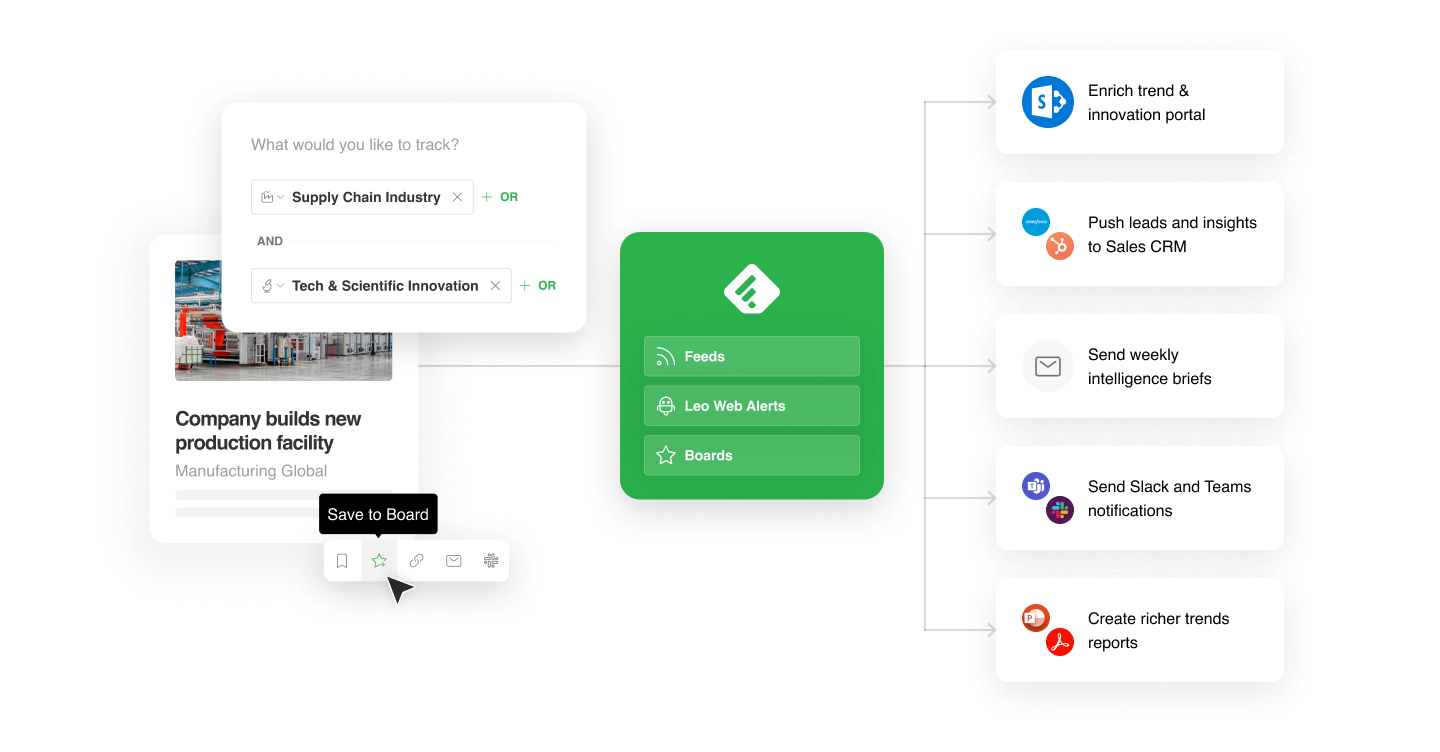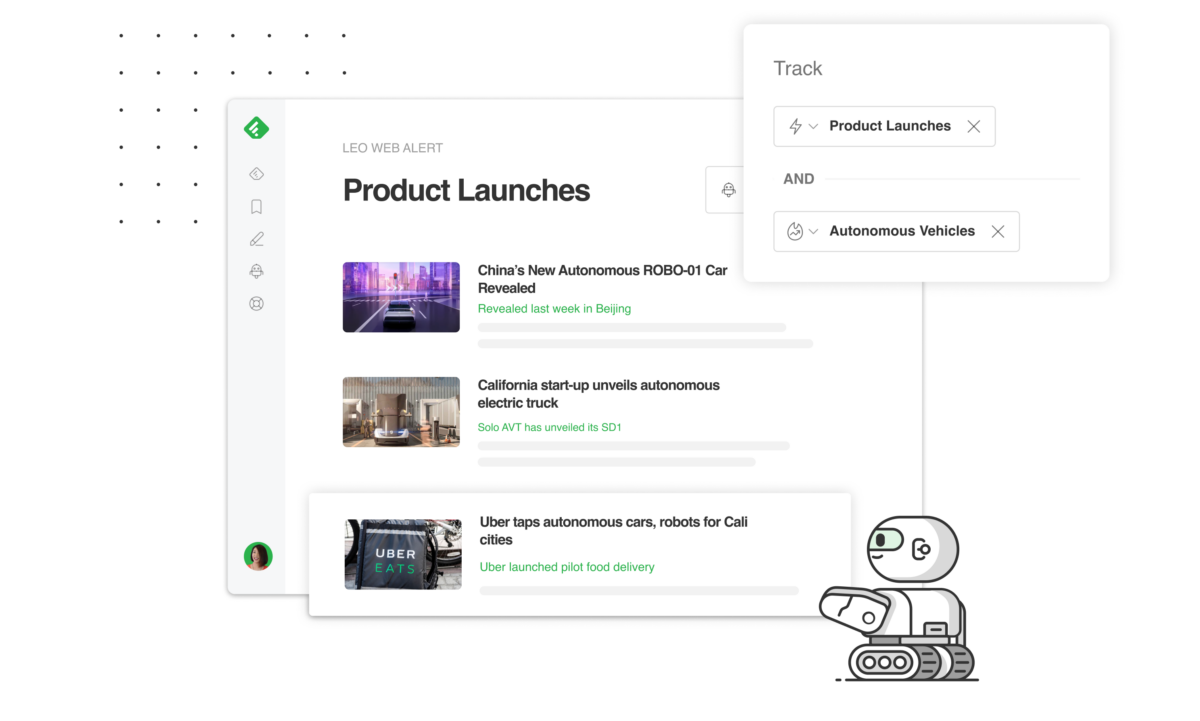
THE SOLUTION
Using Leo, Feedly’s AI engine, to build a hub to monitor innovations, trends, competitors, and opportunities
When Jacek first began pitching Feedly to internal stakeholders, his team was quickly overwhelmed with requests for their own newsletters with real-time information.
“Almost right away, we had many colleagues who were interested and asked us to create newsletters for them,” Jacek recalls. “It started scaling quickly, and very soon it got to the point where our Feedly-dedicated team of two wouldn’t be able to do the monitoring for the whole company.”
So instead, Jacek created an internal scaling model that uses Leo to feed DB Schenker’s innovation, trend, competitor, and opportunity hub and triage intelligence out to the wider company.
Here’s how he did it:
1. Set up Leo to surface the right information
Feedly’s AI engine, Leo, uses a collection of machine learning models to continuously read millions of articles to analyze and tag key concepts in real time. It’s like having an extremely eager research assistant – with a million times the computing power.
Jacek set up Leo Web Alerts, AI-powered searches across the web, to track logistics innovations for new developments. He also used Leo’s pre-trained Tech & Scientific Innovation Concept to get immediate updates on emerging trends and new technologies.
Jacek also set up Leo Web Alerts for the sales teams for DB Schenker’s different business units to help them identify business opportunities. The Leo Web Alerts focused on topics like the supply chain industry, supply chain last mile deliveries, land transport, ocean freight, and warehousing. “It was so simple,” he says.
2. Curated newsletters disseminate valuable market intelligence information across the company
Once Jacek had Leo set up to surface relevant information, he turned on Team Newsletters. The innovation team curates articles by saving them to a Board in Feedly, and then the newsletters are regularly sent to a predefined list of emails from Boards.

Then, he pitched the tool’s market intelligence applications to teams across the company to help other teams set up their own newsletters, based on their intelligence needs.
The innovation team’s first internal customer had a very specific goal in mind: they wanted to use Feedly to stay on top of their customers’ latest investments. “If our customers build a warehouse or a production facility, they are going to need logistics services soon,” Jacek explains. “If we know about that earlier, our sales team can approach our customers to offer our services.”
From there, interest grew quickly, and multiple teams approached Jacek to set up their own newsletters. Pretty soon, Jacek had used Leo to set up 18 different newsletters for teams across the company.
3. The innovation team creates a scalable framework for surfacing trends
Now, when a team approaches Jacek to help them gather market intelligence, the process is simple:
- Jacek asks the department what keywords and concepts they would like to track.
- Then, he creates the Leo Web Alerts for them and asks for feedback on each Web Alert.
- Together, they refine their Leo Web Alerts to improve the signal-to-noise ratio, so they only receive what’s most relevant to them.
- Finally, he trains a team “Feedly editor,” who becomes the owner of the department’s market intelligence – and Jacek is free to go help the next team who wants to gather market intelligence.
Jacek says, “I assist them in the first few weeks, and I help them publish the first newsletter. After that I hand over the reins and that person becomes responsible for intelligence gathering for their team. They can do their own thing.”
“If our customers build a warehouse or a production facility, they are going to need logistics services soon. If we know about that earlier, our sales team can approach our customers to offer our services.”






